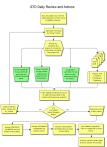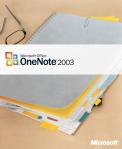This is an excellent summary of SPS v3
After you have ready my posts on Office 12 and SPS, you might like to double check the new features by reading this excellent summary!
After you have ready my posts on Office 12 and SPS, you might like to double check the new features by reading this excellent summary!
One of my friends (Simon) who doesn’t have a blog sent me this article which I though would be a really great post on using text to speech software…. For those of us who spend more than half an hour driving to work each day you may have sometimes wondered...
and IBM’s vision for its equivalent Office System using OpenOffice.org as the client. I am also interested in tracking integration between Microsoft Office and Domino/Workplace. Stu is my guru in this area. I am off to Redmond next week for 3 days on the Office System v12 and meeting some of the Product Managers on Friday so it will be interesting to compare.
 According to Microsoft figures:
According to Microsoft figures:
Office 2003 appears to be falling behind in targeted sales for this point in the product’s lifecycle, according to Microsoft’s own internal figures and guidelines. Just 15% of PCs are running Office 2003, two years into its life, with Office 12 – the next edition of Microsoft’s ubiquitous suite – now on the horizon. However, Microsoft traditionally expects between 50% and two thirds of customers to be running the previous version of Office when the new copy ships. …
obviously Office 2003 is not going to catch up, which means that Office 12 is going to have to make up a lot of sales, and will also be critical to stimulating enterprises to upgrade to Windows Vista , as most enterprises upgrade both the office suite and OS at the same time.
I am off to Redmond on Sunday for a 3 day briefing on Office12 so we will see if it lives up to the challenge.
WinOE or “workflow for windows”, is probably the must important capability for business announced so far for the longhorn wave:
The Windows orchestration (WinOE) code, built from the ground up by Microsoft’s BizTalk team, is a set of high level XML schemas, .NET classes, application programming interfaces (APIs) and workflow components that will allow Visual Studio 2005 developers create business processes and human-to-human workflow processes.
Microsoft will also have an add-on service available for the Longhorn client and server version of Windows in 2006 and 2007 and will make its fleet of applications including Office 12 and the next Sharepoint Portal Server “WinOE-aware,” several sources said.
 Although the book is good, these templates provide a really easy way to remind yourself of the principles on a day to day basis. There are a number of alternatives templates for GTD and for Steven Covey’s methods as well.
Although the book is good, these templates provide a really easy way to remind yourself of the principles on a day to day basis. There are a number of alternatives templates for GTD and for Steven Covey’s methods as well.
Only a few weeks ago I received my first document that used Microsoft IRM technology in Office to set an expiry date. Not suprisingly the document was early information on a product that’s still in beta and the document expired at around the time the next beta was due to ship. I liked this use of IRM, seemed very useful. So I was interested to come across this article discussing the security related issues we have with document leakage which are also addressed by IRM technologies. here is the summary:
Business documents are the lingua franca of commerce. Every day, sensitive information is leaked without our knowledge, and it is incumbent on us to act now, or answer to the consequences later. Business leaders must realize that while they won’t necessarily make the headlines each time a document leaks sensitive data, they could lose a key partner, customer or lawsuit–or worse, their public image.
 I am desperately waiting to me able to blog at work! I find it very frustratng that most of the technical blogs posts I want to post I am unable to, because they can only be released under NDA and even more frustrating that other people at work can not work with me in the collaborative, community building fashion that blogs enable. We use Notes at work for email, document sharing, discussions etc and are deploying WebSphere as our collaboration portal, so the news that WorkPlace will include blog support is encouraging. It seems very primitive at this stage, but its a start.
I am desperately waiting to me able to blog at work! I find it very frustratng that most of the technical blogs posts I want to post I am unable to, because they can only be released under NDA and even more frustrating that other people at work can not work with me in the collaborative, community building fashion that blogs enable. We use Notes at work for email, document sharing, discussions etc and are deploying WebSphere as our collaboration portal, so the news that WorkPlace will include blog support is encouraging. It seems very primitive at this stage, but its a start.
 I like the GTD methodology, although I don’t follow it myself, although have I tried it. I have found that after reading and absorbing lots of different approaches over the years that my natural condition is organised and prioritised (and I don’t need lists and flow charts to achieve it). Every month or so I do need to write down a great big list of stuff to do and decide what needs to be at the top, but then I can last a few more months quite happily.
I like the GTD methodology, although I don’t follow it myself, although have I tried it. I have found that after reading and absorbing lots of different approaches over the years that my natural condition is organised and prioritised (and I don’t need lists and flow charts to achieve it). Every month or so I do need to write down a great big list of stuff to do and decide what needs to be at the top, but then I can last a few more months quite happily.
For those of you who need more than me though I highly recommend this email interview.
 Michael Sampson writes a great blog on collaboration, its really a daily must check feed on new announcements in the industry and saves me a lot of time. Sometimes he provides some great content himself, such as his 7 pillars framework which is a nice – technology focussed -framework for collaboration.
Michael Sampson writes a great blog on collaboration, its really a daily must check feed on new announcements in the industry and saves me a lot of time. Sometimes he provides some great content himself, such as his 7 pillars framework which is a nice – technology focussed -framework for collaboration.
In his most recent post he discusses OneNote shared sessions which I would really like to try if it worked across firewalls more easily, however for now I will have to settle for this review.
Chris Pratley from Microsoft is one of the designers of OneNote and he has also written an excellent description of how the OneNote team use the feature and this post has an excellent set of comments.
For a bit of fun Eric Macks kids Amy and Wendy did a pod cast on OneNote shared sessions which Eric blogs about.